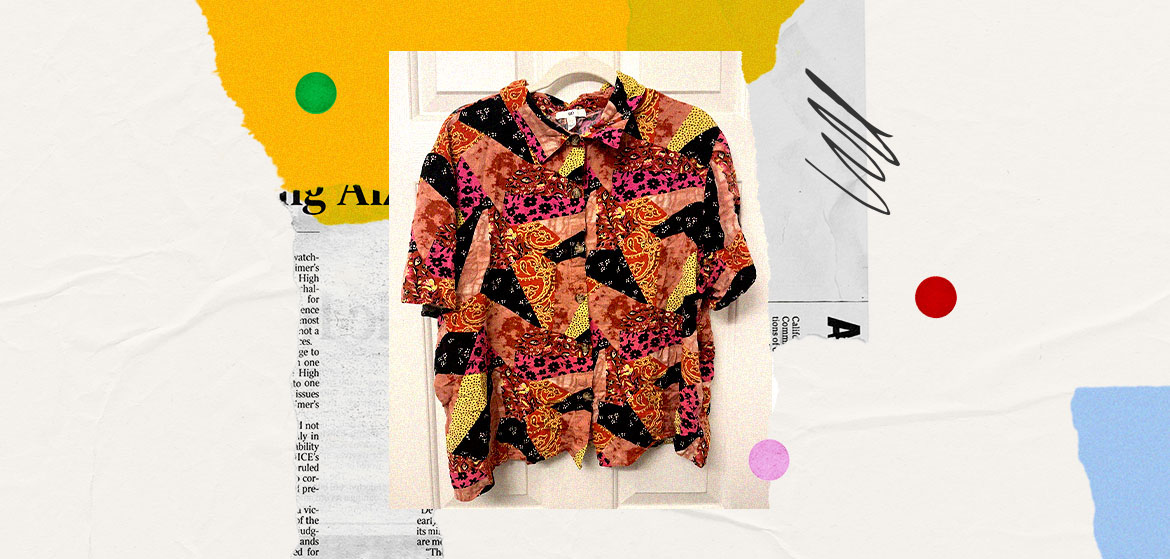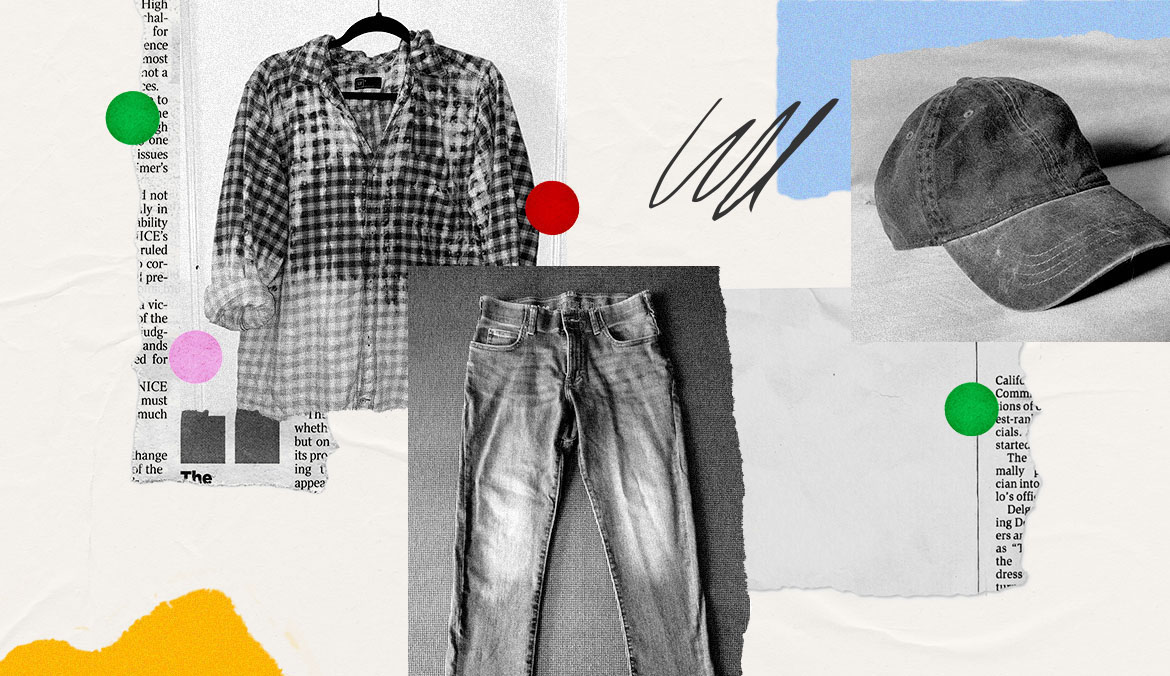Skinny jeans were still in their heyday for women’s fashion, and bomber jackets were having a serious moment in men’s fashion. I found an olive green bomber jacket that I loved. I loved the look, sure, but more than that, I loved how I felt while wearing the jacket. Before coming out, I often felt as though I was dressing in drag, pretending to be a woman. In this bomber jacket, though, I felt the exact opposite. I was presenting as myself, and that made it felt great. This was my first taste of gender euphoria.
“Gender euphoria is when you feel ‘right’ in your gender—that your gender expression is aligned with your sense of self,” says therapist Alyse Ruriani, LPC, and author of The Big Feelings Survival Guide. “[It] can bring about feelings of joy, happiness, excitement, and ease, and is often seen as the opposite to gender dysphoria.” Gender dysphoria refers to the distressing disconnect a trans person may feel from their assigned sex at birth.
“When trans people dress in a way that affirms and expresses their gender, it can decrease gender dysphoria and increase euphoria, which can positively impact their mental health.” —Alyse Ruriani, LPC
Transition looks different for every trans person. There’s social transition and medical transition. Some trans people are binary and some are not. But clothing is something we all have in common. “When trans people are able to dress in a way that affirms and expresses their gender, it can decrease feelings of gender dysphoria and increase the experience of gender euphoria, which can positively impact their mental health,” Ruriani says.
Early in my transition, I started favoring the pieces of clothing that gave me those moments of gender euphoria. In many ways, it felt like building a closet from scratch. That bomber jacket didn’t come with me when I moved to a warmer climate, but I have a lot of sentimentality tied up with the memory of it, along with other clothes I found early in my transition.

These days, a short-sleeve button down is the most gender-affirming thing I can wear. I love buttoning it up to the top button, as if I were going to wear a tie. My short-sleeve favorite is a gift from my sister, and I wear it as often as I do laundry. It’s colorful and busy, which are two adjectives I didn’t always associate with men’s clothing, although I knew the described my personal style.
In the seven years since I’ve come out, my wardrobe has changed to better reflect my gender; clothes have helped change my life.
Often, trans folks navigate their wardrobes with compromises, searching for clothes that hide our curves—or lack thereof, depending on the direction of the transition. Getting dressed can feel like a game of avoidance. On the other hand, when we find gender-affirming clothing items, we get to experience those shiny gender breakthroughs. And if a trans person can find enough clothing that feels gender affirming, it isn’t avoidance at all; it’s a celebration.
I recently asked seven other trans people about their most gender-affirming pieces of clothing. Like me, many had memories and emotion tied up with their most affirming pieces of clothing. Here are the pieces of clothing that they want to celebrate for generating gender euphoria:
1. Stormie Daie (she/her), Durham, North Carolina
When I asked Daie, a Black queer non-binary trans drag queen, about her favorite piece of clothing that generates gender euphoria, she responded immediately: “Heels, duh.” In addition to performing in drag, she also works as a community-outreach coordinator.
“The heel is the emblem of performance, like the shield is the emblem of protection,” she says. Her favorite pair of heels are holographic thigh-highs, which are loud and—most importantly—high. An ideal heel height, she says, helps her channel the power and strength of She-Hulk.
2. Xiaomin Xue (he/him), Austin, Texas
Xue’s favorite piece of clothing is a bit of a surprise to his former self. After years of avoiding jeans, the sous chef trans man says jeans have become not only a wardrobe staple, but a gender-affirming one. The fit of jeans used to make him dysphoric, but he’s now in a different place with his gender transition. When he tried out jeans again recently on a whim, he felt glad that he did. “It’s just a really nice feeling to be able to fit into something that [once] made me really uncomfortable,” says Xue.
To find a certain type of garment to be gender affirming after a period in which it elicited dysphoria isn’t only exciting but is also often a relief. Clothing is a necessity, so when an entire category of clothing makes someone dysphoric, it’s restrictive. When a trans person finds a gender affirming piece of clothing, the result isn’t just a confidence boost, but a way to make daily life easier.
3. Lindz Amer (they/them), New England
Amer, author of Rainbow Parenting: Your Guide to Raising Queer Kids and Their Allies, found their love for overalls during the pandemic and now owns seven pairs. “I was dealing with a lot of body dysphoria pre-top surgery, and overalls were a really comfortable thing I was wearing around the house,” they say. “I started accumulating them.”
Originally, their favorite overalls were a pair of white Dickies, which they wore for their small City Hall wedding. Afterward, they paid a friend to tie-dye the overalls, transforming them from wedding white to rainbow. Now, the overalls are a colorful Pride accessory and a tool for gender-affirming expression.
4. Riley Black (she/they/it), Salt Lake City
“I don’t feel quite like myself if I’m not wearing a collar,” says Black. “I guess it’s been that way since before I started hormones.”
Black, a trans woman, is a paleontologist and science writer, and her relationship with her collar is wrapped up in more than gender euphoria. She is a survivor of childhood and marital abuse, two kinds of abuse trans people are more likely to be subject to. Her marriage ended with her ex-wife leaving to be with a cis woman, signaling to her that she was not seen as who she feels she is.
“To [my ex], I wasn’t [a woman],” Black says. “And in that moment, as I started asking myself who I was and wanted to become. I felt the urge to have some kind of totem that would remind me that I belonged to myself.” That’s when Black found her first collar. Now she has a few collars—some for special occasions, some for daily use. For her, they signal resilience. “I can’t change what I went through, but the collar is a reminder that I chose myself and what I wanted for my life and my body.”
5. Bren F (mirror pronouns), Seattle
Bren F uses any pronouns or mirror pronouns, which means whatever pronouns you’d use for yourself. Bren works as a graphic designer and also runs a queer research library. Bren’s gender is queer, which they say is all anybody needs to know.
When I ask about the baseball cap they designated as a clothing item that they associate with gender euphoria, they cite the “euphoric memories it carries.” They go on to explain the cap was a $3 thrift–store find on the summer vacation during which they came out to a friend as bisexual.
“It was a beautiful trip; I felt safe and accepted and understood for the first time in my life. This hat is in all the photos from that trip because I wore it every day.” Bren figures the reason baseball caps carry so much importance to them is that caps are both androgynous and practical, two adjectives they’d use to describe their own gender.
6. nat raum (they/them), Baltimore, Maryland
An MFA student and graduate assistant raum describes themself as an agender femme who identifies as transmasculine. Their gender-affirming piece of clothing is a queer classic: a flannel.
For raum, the euphoria from the flannel isn’t about the garment itself, but the memories it conjures. “I had recently gotten out of a bad relationship and was starting to explore my transness and question my gender more openly, so this was a really transformational time for me,” they say. This particular flannel was an early-pandemic purchase, but years later, it has staying power. “I have a lot of pieces in my closet that give me euphoria, but this is definitely the most euphoric, as well as the first,” raum says.
7. Rochelle Kelly (she/they), Philadelphia
Kelly owes their most gender-affirming piece of clothing to their dad: one of his old work shirts. They tell me that they weren’t exploring gender identity when they received the hand-me-down—at least, not consciously. “At the time, I was very concerned about being a fat kid trying to get through school, so I was like, ‘What can I wear that won’t show too much or get too much attention?’”
Now, years later, Kelly’s clothing choices aren’t about hiding. “I found a whole community of other Black non-binary femme people who are like, ‘We’re non-binary, but our relationship to womanhood is still valuable! And that’s where I am,” says Kelly. ““For me, [gender euphoria is about] looking into a mirror and feeling like everything is completely aligned. The inside, the outside, it’s there. You have no questions.”
